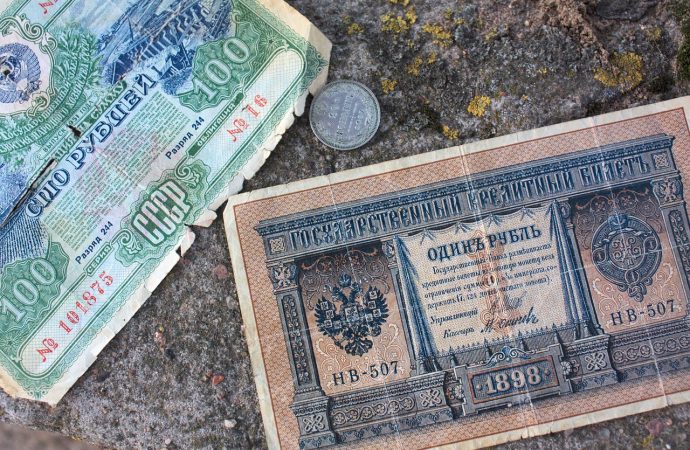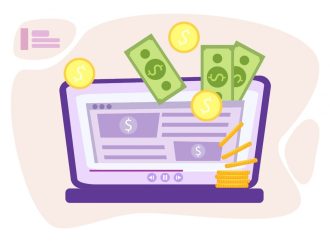Introduction Russia is one of the world’s most mysterious countries. It has a vast and unique history, and its central bank reserves are no different. While there is a lot that we know about Russia’s central bank reserves, there is still much that remains a mystery. In this blog post, we will uncover some of
Introduction
Russia is one of the world’s most mysterious countries. It has a vast and unique history, and its central bank reserves are no different. While there is a lot that we know about Russia’s central bank reserves, there is still much that remains a mystery. In this blog post, we will uncover some of the secrets behind Russia’s central bank reserves, from their investment strategies to what may be hidden beneath the surface. You’ll also find out why these reserves are so important and how they affect not only the Russian economy but the global economy as well.
What are Russia’s Central Bank Reserves?
Russia’s central bank reserves are a topic of much debate and speculation. Many believe that the reserves are a way for Russia to prop up its economy, while others believe that they are a source of instability. Here, we take a look at what we do and don’t know about Russia’s central bank reserves.
What we do know is that Russia’s central bank reserves are vast. As of June 2017, the Russian Central Bank held $458.4 billion in foreign currency reserves, making it the fifth largest holder of foreign currency reserves in the world. The vast majority of these reserves are held in US dollars (around $377 billion), followed by euros (around $52 billion).
What we don’t know is how these reserves are being used. Some believe that Russia is using its reserves to support its economy, which has been struggling in recent years due to sanctions and low oil prices. Others believe that the Russian government is using its reserves to buy assets abroad, including real estate and businesses. It’s also possible that the Russian Central Bank is simply holding on to the reserves as a buffer against economic instability.
In any case, it’s clear that Russia’s central bank reserves are significant. What remains to be seen is how they will be used in the future and what impact they will have on the global economy.
How did Russia accumulate so much in reserves?
Russia’s central bank has been accumulating foreign reserves since the late 1990s, when it began to intervene in the currency markets to stem the ruble’s devaluation. The intervention continued even as oil prices surged and the economy boomed, with the central bank buying up dollars and other hard currencies to build up its war chest.
In recent years, Russia has used its reserves to help weather Western sanctions and prop up the ruble, but they have also come under pressure as the country’s economy slows. Here we take a look at how Russia accumulated such a large stockpile of reserves, and what it might mean for the future.
Russia’s economic transformation in the 1990s was driven by high oil prices and production, as well as by reformist policies that helped spur growth. This led to strong demand for rubles, which appreciated against the dollar. To prevent further appreciation and support export competitiveness, the central bank began intervening in currency markets in 1998. It continued to do so even as oil prices surged and the economy boomed in the 2000s.
The central bank was able to accumulate foreign reserves because it was running a large trade surplus (driven by oil exports) and receiving significant capital inflows (attracted by high oil prices and strong economic growth). These inflows more than offset any outflows from intervention in the currency markets. As a result, Russia’s foreign reserves increased from around $12 billion in 1998 to over $600 billion by 2008.
The
What does this mean for the Russian economy?
Russia has been accumulating foreign currency reserves since the late 1990s, but the reasons for this are not entirely clear. What we do know is that the Russian central bank has been buying up dollars and other currencies in order to support the ruble, which has come under pressure from low oil prices and Western sanctions.
But what does this mean for the Russian economy?
For one thing, it means that the Russian central bank now holds a large amount of foreign currency, which can be used to stabilize the ruble if needed. Additionally, it gives Russia a cushion against further economic shocks, such as another drop in oil prices or more sanctions.
However, some experts have warned that Russia is amassing too much foreign currency, which could lead to inflationary pressures. Others have raised concerns about the quality of the assets being purchased by the central bank, which could eventually cause problems down the road.
So far, though, Russia’s economy has held up relatively well despite these challenges, and it remains to be seen how long this will continue. Ultimately, only time will tell whether the Russian central bank’s reserve accumulation is a wise move or a risky gamble.
What don’t we know about Russia’s central bank reserves?
There are several key things that we don’t know about Russia’s central bank reserves:
1. How much of the reserves are held in foreign currency?
2. What is the breakdown of the reserve assets?
3. How much of the reserves are earmarked for specific purposes?
4. What is the role of the reserves in Russia’s overall economic policy?
Each of these questions is important in understanding the true nature of Russia’s central bank reserves and their potential impact on the Russian economy. Without this information, it is difficult to make informed decisions about how to best use or invest the reserves.
Conclusion
In conclusion, Russia’s central bank reserves remain a mystery despite our best efforts to uncover their secrets. It is clear that while the size of the reserves can be estimated and some details about their composition can be obtained from public reports, it is very difficult to get a full picture. In light of this lack of information, we must continue to speculate about what other assets might make up these mysterious funds. The answers may never be known for certain but examining the available evidence allows us to draw educated assumptions on what these hidden assets could contain.





















Leave a Comment
Your email address will not be published. Required fields are marked with *